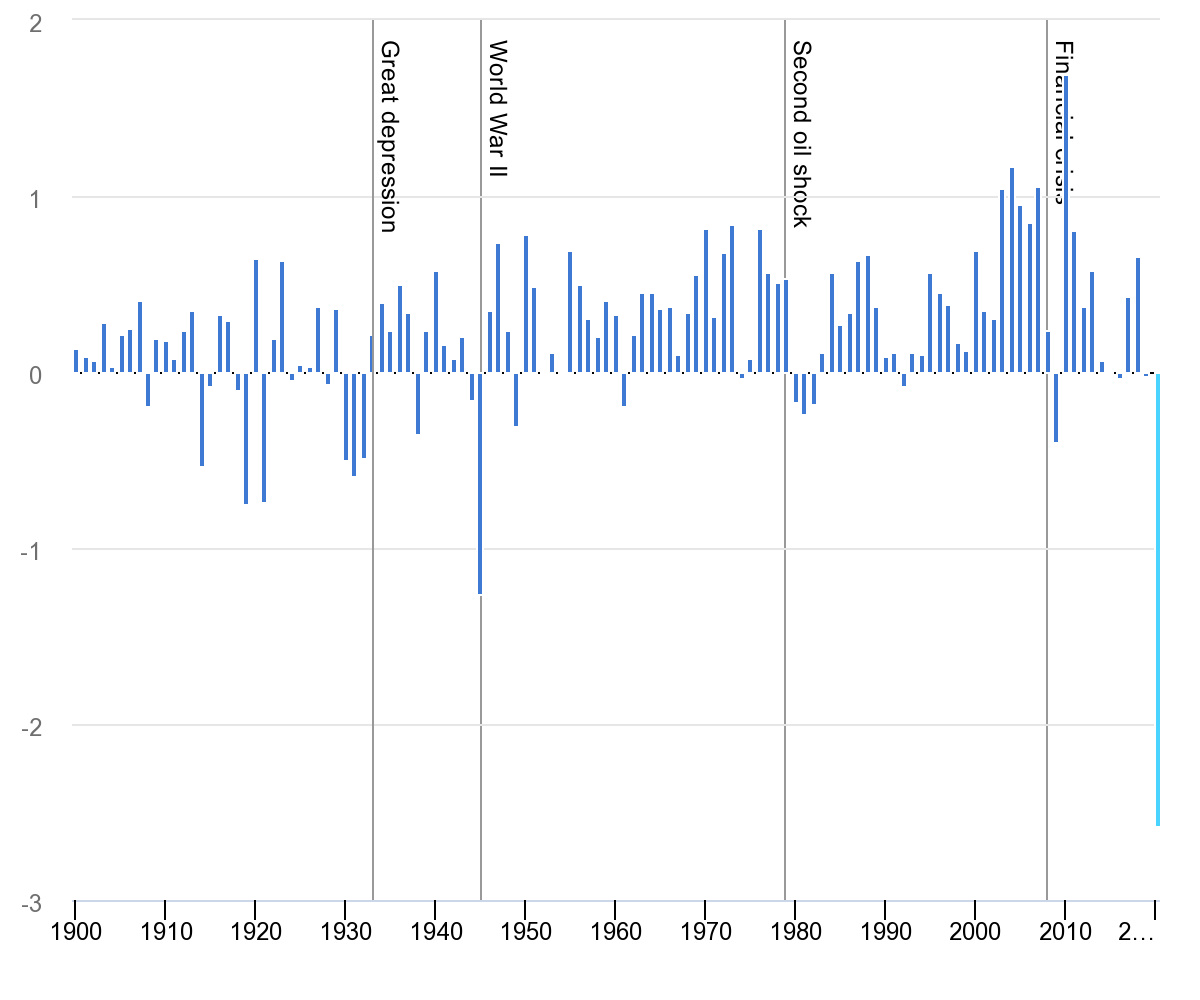Climate Change Mitigation, Adaptation & COVID-19
Institutional and community responses to the COVID-19 pandemic proved our ability to effectively adapt to rapidly changing circumstances: school and workplace environments shifted online overnight, health services became available remotely through telehealth, and communication across the world occurred from within our homes, eliminating as much unnecessary travel and in-person social interaction as possible. As Dale Marshall from Climate Defence Canada explains, “bending the curve” for GHG emissions is no different from doing so for COVID-19 infections.87 The responses to the pandemic have shown that human health and the environment are closely related, and thus collective action to improve one may also significantly improve the other. The reduction in global GHG emissions during worldwide social distancing and lockdowns is an example of this correlation between human health and the environment (Figure 2).
The International Energy Agency (IEA) reported that the average maximum daily reduction in CO2 emissions for individual countries was approximately -26% between January and April 2020, relative to 2019. Global daily CO2 emissions after lockdowns were implemented across the world in 2020 were comparable to emissions levels in 2006.88 The estimated annual decrease for 2020 of approximately -7.5% was the greatest ever recorded in history, and twice the amount of all past reductions since World War II. The outcomes of reduced GHG emissions were immediate, leading to noticeable changes around the world. For example, a clear view of the Himalayas could be seen from Jalandhar, an extremely rare event due to excessive air pollution in the region, was reported in April 2020 after India had imposed a lockdown in March of that year.89

According to the UN Environment Programme, the scale of reduction seen at the beginning of the COVID-19 pandemic is what will be necessary every year for the next decade in order to limit temperature increases to 1.5oC, in alignment with the Paris Agreement. This makes evident how far behind countries around the world are in meeting their climate mitigation goals.90 IEA suggests, however, that the level of emissions reduction during COVID-19 was temporary and the rebound may be greater than the reduction.91 According to a survey report published by the Canadian Centre of Policy Alternatives, the majority of BC residents want the provincial government to focus on sustainable and equitable economic recovery rather than rebuilding the system in place before the pandemic.92 Determined and timely actions by all levels of government are required to ensure that, as we rebuild our economy, more sustainable measures are implemented. In keeping with this approach the International Institute for Sustainable Development has outlined seven key principles for a green recovery in Canada:
- Financial support to industry must include conditions for a zero-emission transition.
- Strict financial conditions must be applied to increase financial stability, secure jobs, and incentivize low-carbon transition.
- Recovery should be worker-focused and must accelerate and enable a just transition.
- The creation and development of sustainable sectors and infrastructure must be supported.
- Environmental regulations and climate policy frameworks during recovery must be followed, protected, and strengthened.
- Transparency and accountability of green recovery efforts must be ensured.
- Support must contribute to increased equity and well-being, leaving no one behind.93

